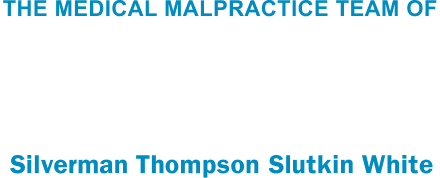Illinois Supreme Court Strikes Down State Medical Malpractice Cap
Earlier this month, the Illinois Supreme Court struck down a medical malpractice statute that had limited the amount of money a victim of medical malpractice could recover for pain and suffering from a hospital or health care provider. The 2005 law had created a cap of $1,000,000 on any award for pain and suffering against a hospital and $500,000 on any award for pain and suffering against an individual health care provider. As in Maryland, proponents of the legislation (doctors and insurance companies) had argued that caps on monetary damages were the only and best way to curb rising health care insurance costs/premiums. In striking down the law, the Illinois Supreme Court found that the law violated the State’s separation of powers clause between branches of government by permitting the legislature to interfere with the jury’s right to determine and award damages.
In Maryland, a similar cap on non-economic damages exists. To date, efforts to have the cap overturned have been unsuccessful despite similar arguments to those made in Illinois being raised.
For medical malpractice claims arising after January 1, 2010 in Maryland, if there is only one wrongful death beneficiary, the maximum non–economic recovery for that medical negligence is $680,000. If there are 2 or more wrongful death beneficiaries, the maximum non–economic recovery is $850,000. For claims arising after January 1, 2011, if there is only one wrongful death beneficiary, the maximum non-economic recovery for that medical negligence is $695,000. If there are 2 or more wrongful death beneficiaries, the maximum non-economic recovery is $868,750. For claims arising after January 1, 2012, if there is only one wrongful death beneficiary, the maximum non-economic recovery for that medical negligence is $710,000. If there are 2 or more wrongful death beneficiaries, the maximum non-economic recovery is $887,500. For claims arising after January 1, 2013, if there is only one wrongful death beneficiary, the maximum non-economic recovery for that medical negligence is $725,000. If there are 2 or more wrongful death beneficiaries, the maximum non-economic recovery is $906,250.
These caps, of course, do not take into account a patient’s economic losses — future medical expenses, past medical expenses, past or future loss of earnings, out of pocket expenses — sums that are added to the caps on non-economic damages in order to reach a total maximum possible award.
For reasons that our lawyers do not agree with, if a loved one is injured or dies in Maryland as a result of medical malpractice, these maximum caps are significantly lower than the maximum cap that applies if that same person were to die as the result of a negligent automobile user or negligence on the job. This remains a hot-button topic in the Maryland legislature and amongst lawyers, doctors and insurance companies. The lawyers at STSW strongly believe that this bill unfairly penalizes the victims of medical negligence, who, through no fault of their own, have been victimized by medical negligence. It is our hope that the unfairness associated with this statute will soon be recognized by the highest courts in Maryland and struck down, much in the same manner as the Illinois Supreme Court did with its similar statute.






